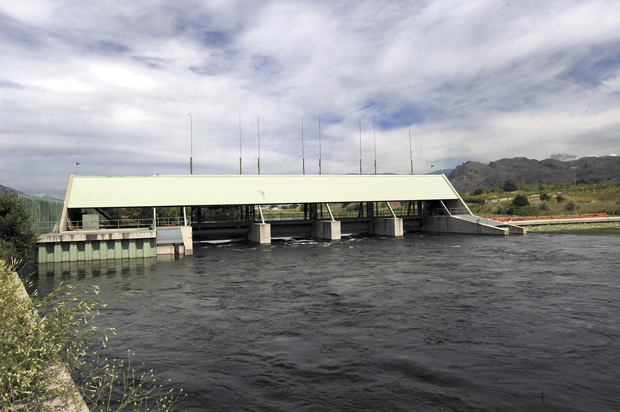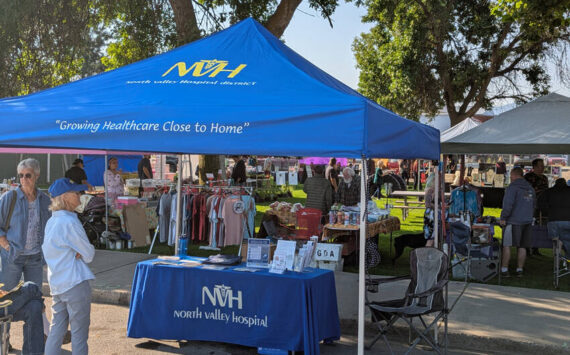
The state Department of Ecology regulates lake levels at Zosel Dam in Oroville. Lake levels can fluctuate into early July depending on snowpack. The International Joint Committee has decided to allow for a wide range of levels to deal with this summer’s dry conditions.
WASHINGTON, DC – The International Osoyoos Lake Board of Control (Board) will allow for a broader range of water levels on Osoyoos Lake this summer to help limit the impacts of dry conditions in the basin.
The board implements an Order from the International Joint Commission (IJC) that mandates a range of allowable Osoyoos Lake levels. Under normal conditions, the Order specifies that Osoyoos Lake levels be maintained between 911 and 912 feet from May 1 to Sept. 15 by the operator of Zosel Dam – Washington State Department of Ecology (Ecology). The Order also provides for an expanded range of allowable lake levels between 910.5 and 912.5 feet during drought conditions if forecasts for Similkameen River flow volume and either net inflow to Okanagan Lake or Okanagan Lake levels fail to reach specified values. Forecasted Similkameen River flow volume met the Order’s drought criteria, but forecasted Okanagan Lake criteria did not meet the Order’s drought criteria and therefore the Board did not declare drought conditions in 2019.
Continuing concerns about meeting increased demands on water supply and maintaining instream flows in the Okanogan River downstream of Osoyoos Lake during the summer prompted Ecology to apply for a temporary deviation from the Order to adapt the expanded range of allowable lake levels between 910.5 and 912.5 feet until Sept. 15. The IJC granted Ecology’s request in June so that spring runoff from the Okanogan basin could be stored and released later in the summer to improve late-summer water supply in the Okanogan River. Osoyoos Lake levels began to rise in June in accordance with the temporary lake levels and are expected to lower during the summer as inflow to Osoyoos Lake decreases, discharge in the Similkameen River decreases and outflow from Osoyoos Lake increases to maintain discharge in the Okanogan River.
The International Osoyoos Lake Board of Control will continue to monitor inflows to Osoyoos Lake and flows on the Similkameen River and ensure compliance of Zosel Dam operations with the IJC Order. Real-time lake levels are publicly available on the IOLBC’s website at https://ijc.org/en/olbc.





